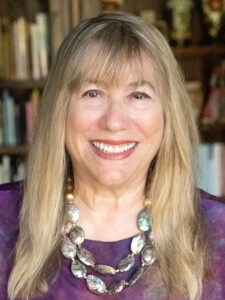
With caring as her creed throughout her distinguished career, educator Kathe Hicks Albrecht, PhD, has been the recipient of awards from the Achievement Rewards for College Scientists (ARCS), the Visual Resources Association, and American University alongside being honored in dozens of Marquis publications since 1997, including Who’s Who in the World and Millenium Magazine in addition to receiving the Albert Nelson Marquis Lifetime Achievement Award.
Now a member of the special faculty at the Institute for Doctoral Studies in the Visual Arts, Dr. Albrecht teaches a dissertation preparatory course that helps students complete projects in the field of philosophy and aesthetics after stints as an art history instructor at Northern Virginia Community College and a visual resources curator at American University in Washington, D.C. She also is the author of “The Machine Anxieties of Steampunk: Contemporary Philosophy, Victorian Aesthetics, and the Future,” released in 2020 by Bloomsbury Publishing Inc. For readers of her book, Dr. Albrecht describes, in part, why people across the globe are eagerly embracing the neo-Victorian aesthetic. She explains that the look of old-fashioned eye goggles, lace corsets, leather vests, brass gears and gadgets, and mechanical clocks, appears across popular culture, in movies, art, fashion, and literature. However, she continues, steampunk is both an aesthetic program and a way of life, and its underlying philosophy is the key to its broad appeal. Steampunk, she says, champions a new autonomy for the individual caught up in today’s technology-driven society. It expresses optimism for the future, but it also delivers a note of caution about our human role in a world of ever more ubiquitous and powerful machines, Dr. Albrecht declares.
Having earned a PhD in philosophy and aesthetics from her alma mater at the Institute for Doctoral Studies, a Master of Arts in art history from American University, and a Bachelor of Arts in art history from the University of California, Los Angeles, Dr. Albrecht is featured in the notable McGraw Hill-published book, “How Women Lead: The 8 Essential Strategies Successful Women Know” by Sharon Hadary. Married since 1973 with three children and four grandchildren, Dr. Albrecht attributes her success to her American University mentors, Norma Broude and Mary Garrard, who motivated her to accomplish her goals. She also credits visual resources curators Christina Updike and Christine Sundt for their guidance, encouragement, and depth of knowledge imparted to her throughout her career. Perennially passionate about her profession, Dr. Albrecht believes what separates her is her continual commitment to helping the community and making a difference through education. She wants to be known and ultimatelyremembered as a dedicated educator, collaborator, and individual who positively impacted the next generation of students.
Dr. Albrecht became interested and involved in her profession after being influenced by her mother, who was an artist. Her father, a psychoanalyst, inspired her intellectual side. Combining this with her artistic bent, she knew she would study art history in college, which led to her exposure to and gaining an affinity for the visual resources field in graduate school and sparked her interest in helping young people find their own education path when she became a graduate professor. Since then, in parallel to teaching and writing, Dr. Albrecht has remained involved in a plethora of career-related, leadership, civic, and volunteer endeavors with ARCS, the U.S. Department of Commerce, the National Initiative for a Networked Cultural Heritage, the Museum Educational Site Licensing Project at Getty Research Institute, the Visual Resources Association Foundation, the Southeastern College Art Conference, the American Alliance of Museums, the College Art Association, the National Endowment for the Humanities, the National Museum of Women in the Arts, Fairfax County Public School Systems, the Republican National Committee, and a host of other groups. In the coming years, she sees herself still teaching at the graduate level as well as working in and supporting the arts and humanities, enjoying her retirement, and cherishing time with her family.
